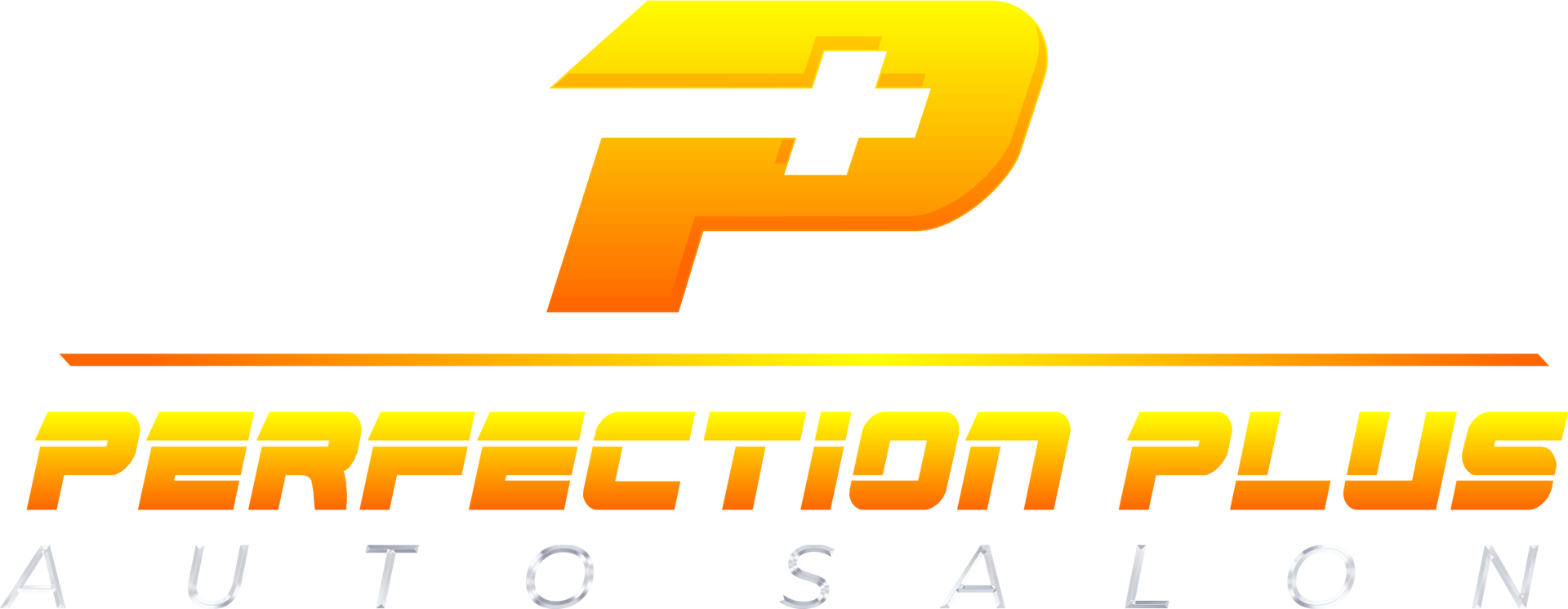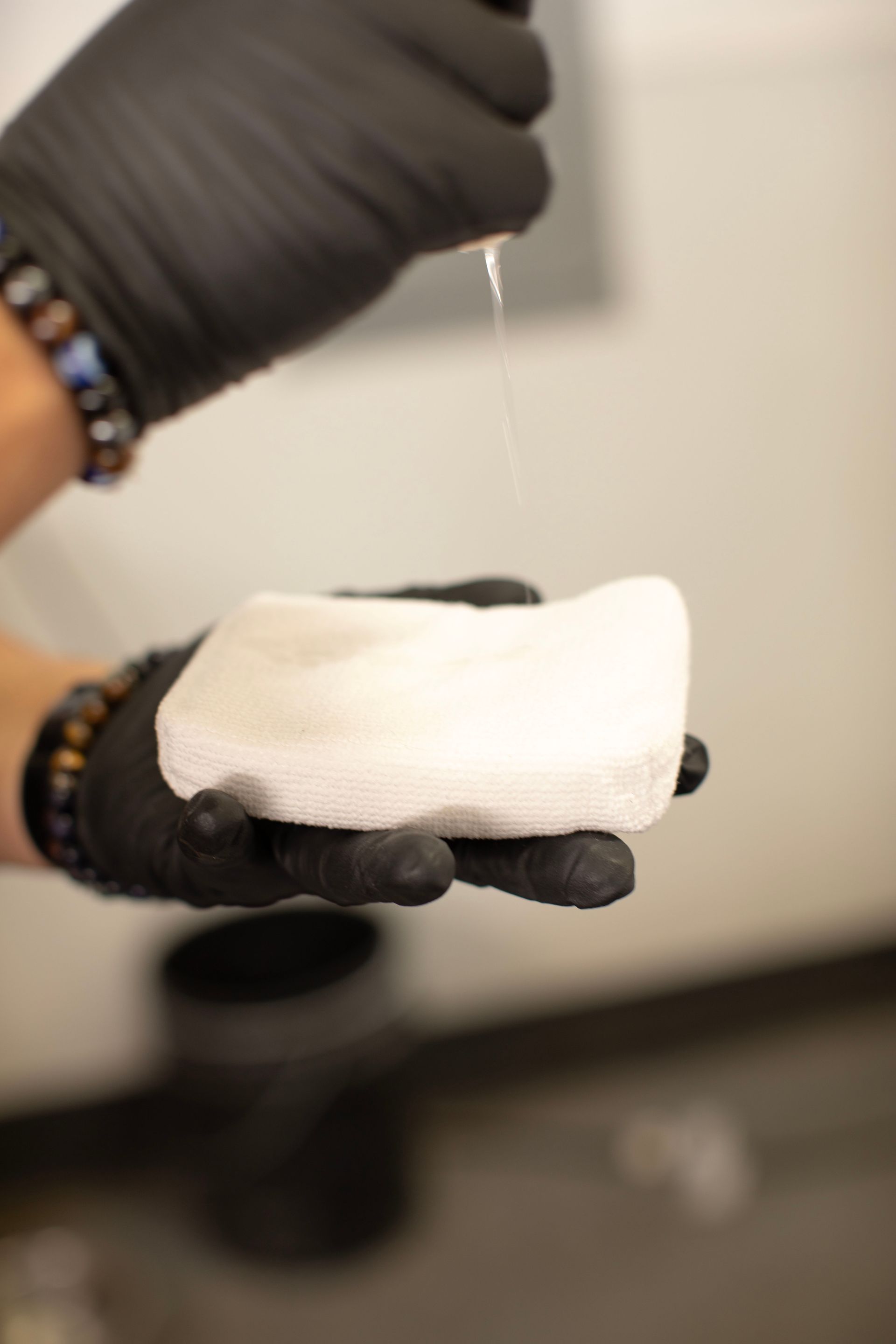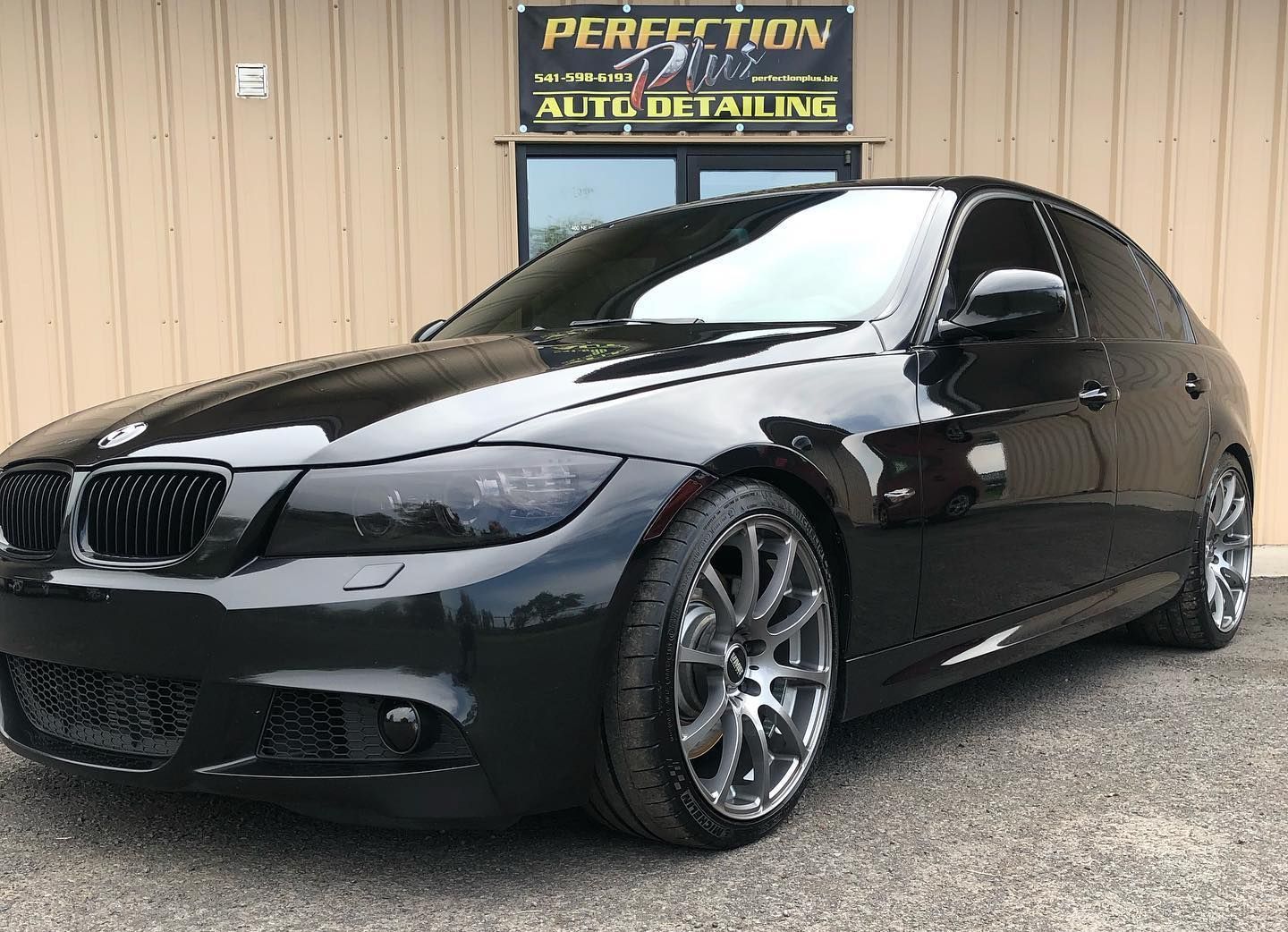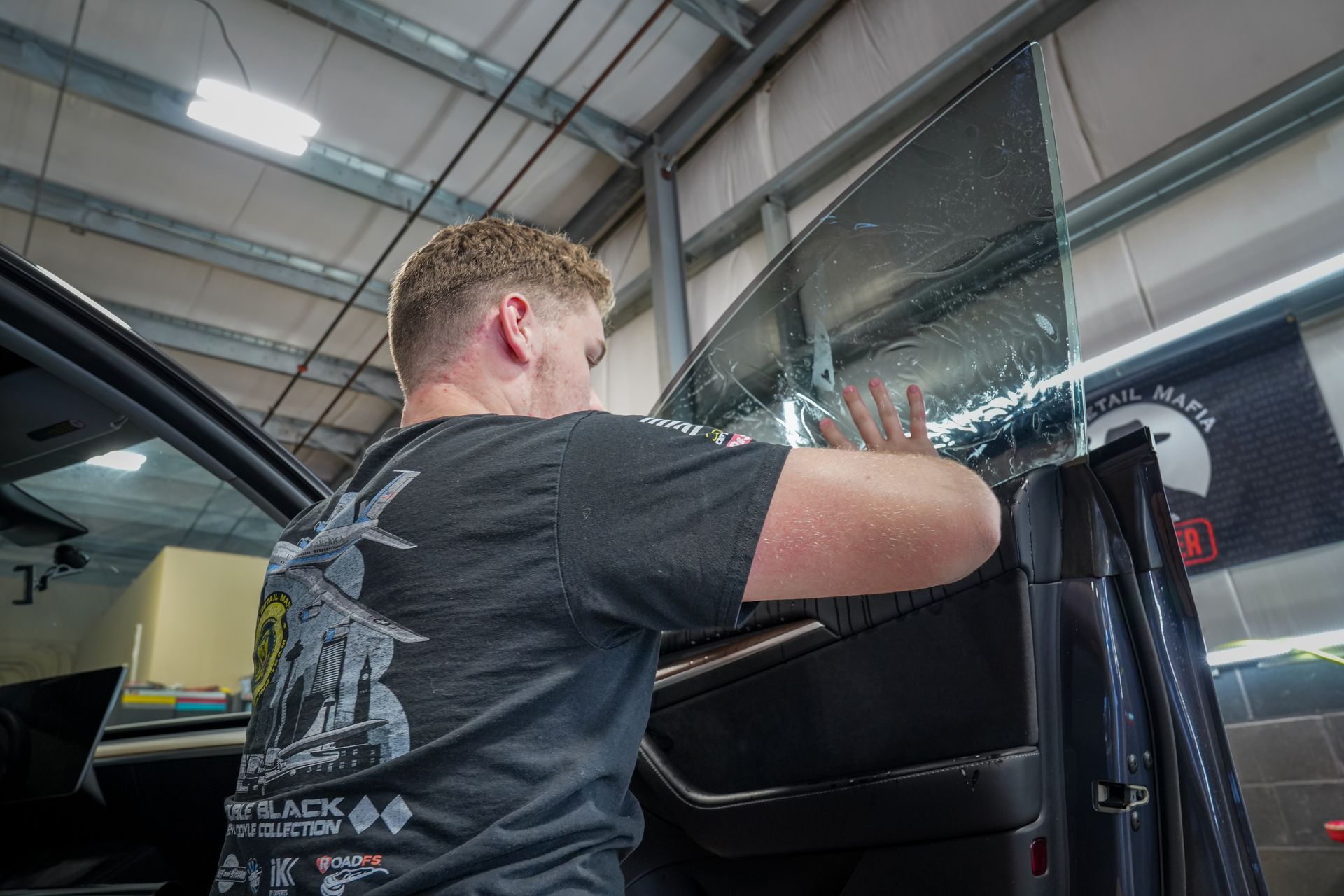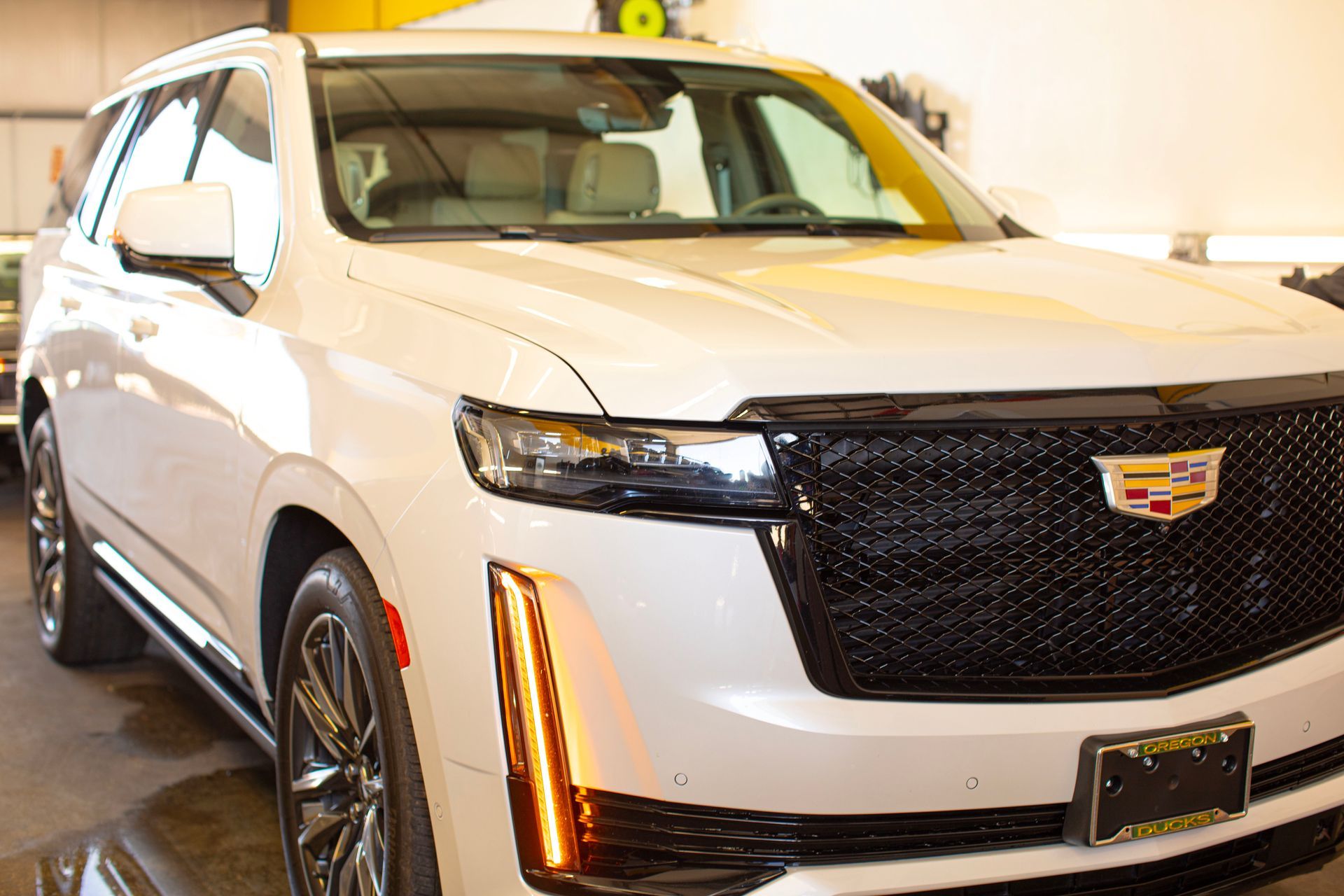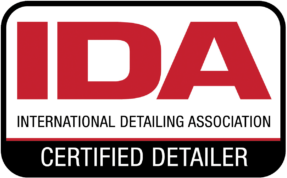Ceramic Coating: Can It Prevent Water Spots on Your Car's Surface?
GET A FREE ESTIMATEWhen it comes to keeping your car's finish looking its best, the recurring struggle against water spots is a common headache many car enthusiasts face. You might think that a good wash and wax would do the trick, but if you're aiming for something more robust, you've probably heard about ceramic coatings. These high-tech options promise enhanced protection and a shiny finish, but do they actually prevent those pesky water spots?
While ceramic coating provides an additional layer of protection and enhances hydrophobic properties, it cannot completely prevent water spots, especially under certain conditions like exposure to hard water or contaminants. Regular maintenance, such as washing and drying your vehicle promptly, can help minimize water spotting issues associated with ceramic coatings.
The Role of Ceramic Coating in Water Spot Prevention
Ceramic coatings offer a unique layer of protection, significantly enhancing the resilience of a vehicle's paint against environmental factors. Their hydrophobic properties cause water to bead up on the surface instead of creating a thin layer that leads to unsightly water spots. This means that instead of allowing contaminants like minerals and pollen to settle on the coat, these droplets roll off, taking some dirt along with them. It's an impressive feat for car owners looking for ways to maintain aesthetic appeal and protect their investment. Despite these advantages, ceramic coatings are not foolproof. While they can reduce water spot formation compared to untreated surfaces, complete prevention is an entirely different story. Studies have shown that under conditions such as high mineral content in rainwater or heavy pollen exposure—even ceramic-coated vehicles can still develop water spots. This occurs because those beads of water don't always leave the surface immediately; as they evaporate, they may leave behind mineral deposits that mar the finish. This is especially problematic for vehicles parked outdoors in adverse weather conditions; the elements can compromise even the best protective coatings if left unchecked.
Regular maintenance becomes crucial in this context. Taking time to clean your vehicle frequently will help mitigate potential staining caused by either rainfall or debris landing on your car's surface. Using filtered or demineralized water during washing helps prevent mineral deposits from accumulating. By treating hard water before it touches your car, you ensure that fewer unwanted minerals remain behind after drying. For additional protection, consider using rinseless washes, which encapsulate minerals and minimize spotting when air drying. These products are specifically designed to work harmoniously with ceramic coatings. Additionally, quick detailers provide an extra shield against contaminants, prolonging both shine and coating life.
Effectiveness Compared to Traditional Waxes
When it comes to safeguarding your vehicle's paint, ceramic coatings take the lead with their advanced formula. These innovative coatings forge a potent bond with the car's surface, resulting in unparalleled durability—sometimes lasting up to five years under ideal conditions. This isn't just marketing fluff; it translates to real-world benefits where regular environmental challenges like UV rays, acid rain, and bird droppings can attack unprotected surfaces. A good ceramic coating acts as a shield, preventing further damage while keeping your paint looking fresh. In contrast, traditional waxes don't hold up in the long run. While they create a protective layer initially—similar to how a nice thick coat might keep you warm on a chilly day—they offer only temporary solace. Typically, wax lasts three to six months, depending on environmental factors and care routines. After this point, its efficacy wanes significantly, requiring you to reapply it frequently. This means not only added time spent maintaining your vehicle but also continuous expense since you'll need to purchase new wax regularly.
Many automotive enthusiasts are increasingly turning to ceramic coatings over traditional waxes, recognizing the long-term benefits they provide. While the switch may seem intimidating at first, the payoff in durability and protection is significant. Consider the comparison: choosing a ceramic coating is like opting for a high-performance raincoat instead of an old poncho that leaks after a few uses—reliability makes all the difference. One key advantage lies in hydrophobic performance. Ceramic coatings typically produce a higher contact angle, around 100–110 degrees, compared to 80–90 degrees for waxes. This means water beads and rolls off the surface more efficiently, reducing moisture retention that can lead to spotting and stains. As one evaluates options for protecting their vehicle's finish, these characteristics become crucial considerations—not only for aesthetic reasons but also for ensuring long-lasting value in their investment.
Hydrophobic Properties and Layering
One of the standout features of ceramic coatings is undeniably their hydrophobicity. This term simply means that these coatings repel water, which results in water droplets forming beads that glide off the surface rather than spreading out and leaving stubborn spots behind. Unlike traditional waxes that provide a contact angle of around 60-80 degrees, ceramic coatings can achieve an impressive contact angle of 100-120 degrees. What this translates to in real terms is not just improved water resistance but also enhanced protection against road grime and environmental contaminants.
The way this works is fascinating: when it rains or when you wash your car, instead of allowing water to settle on the paint surface, the beading effect facilitates quicker runoff, reducing water spots significantly. However, it’s essential to understand that while ceramic coatings are indeed less susceptible to spotting than conventional sealants or waxes, they still require proactive care to maintain their hydrophobic properties. For instance, if pooled water sits on the surface too long—especially in hard water areas—it can potentially leave faint mineral stains unless cleaned off quickly.
Layering Techniques
Many automotive enthusiasts have discovered that applying multiple layers of ceramic coating can boost their effectiveness significantly. Layering adds depth to the protective barrier, making it more resilient against environmental challenges such as acid rain and tree sap. It’s like building armor for your vehicle's exterior; each layer contributes to overall durability and performance. However, there’s a crucial caveat: while layering can amplify benefits, it requires attentive application practices since uneven surfaces can lead to issues later on. It's recommended to allow each layer ample curing time as per manufacturer instructions before proceeding with additional layers. This practice ensures that each layer bonds effectively with the previous one, creating a seamless protective shield.
Maintenance Tips for Ceramic Coatings
- Use Only pH-Neutral Car Shampoos: Maintaining a ceramic coating starts with the right wash products. pH-neutral car shampoos are specifically formulated to clean without compromising the integrity of the coating. Unlike acidic or alkaline cleaners, which can strip the coating or reduce its gloss over time, pH-neutral formulas help preserve the finish while effectively lifting away dirt and contaminants.
- Dry Immediately After Washing or Rain Exposure: Allowing water to air-dry on a ceramic-coated vehicle can lead to mineral deposits and unsightly water spots. To avoid this, always dry your vehicle immediately using clean, high-quality microfiber towels. These towels are designed to absorb water without scratching the surface, helping you maintain the smooth, reflective finish of the coating.
- Apply a Topcoat or Booster Every Few Months: Over time, exposure to sunlight, rain, and road contaminants can reduce a coating's hydrophobic properties. Applying a ceramic booster every few months helps restore water-repelling performance and enhances gloss. These products act as lightweight topcoats, extending the life of the original coating without requiring a full reapplication.
- Schedule a Professional Inspection Annually: Even with proper care, a ceramic coating can degrade or become contaminated beneath the surface. Having a detailing professional perform an annual inspection can help detect and resolve early signs of coating failure, hard water buildup, or embedded contaminants—issues that might otherwise go unnoticed until they compromise your vehicle’s finish.
By following these essential maintenance practices, you can extend the lifespan and performance of your ceramic coating while keeping your vehicle looking its best. A consistent care routine not only preserves the coating’s protective qualities but also ensures your investment continues to deliver a deep gloss and reliable defense against the elements.
Exceptional Ceramic Coating Services in Culver, OR
Protect your vehicle from Oregon’s ever-changing elements with
professional ceramic coating services from Perfection Plus Auto Salon in Culver, OR. Our expert team applies cutting-edge coatings that defend against UV rays, road grime, and moisture while delivering a lasting, mirror-like gloss. Whether you drive a daily commuter or a weekend showpiece, we ensure your car stays cleaner longer and maintains its showroom finish. Experience the difference that precision application and premium protection can make—schedule your ceramic coating service today!
